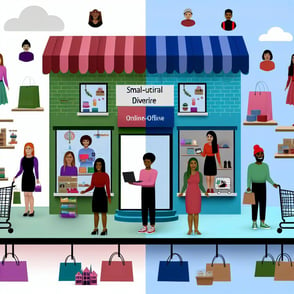In the world of retail, crafting unforgettable in-store experiences is an art that can set your small business apart. We may not have the advanced technology available today, but we have the essentials to create lasting impressions. Let's explore the fundamental steps to enhance your customers' journey.
1. The Storefront Window's Allure
Your storefront window is a powerful tool. A well-designed window display can stop potential customers in their tracks, spark their curiosity, and lure them inside. The secret is to tell a story with your products, making an emotional connection with passersby. These displays offer a sneak peek into the unique experience that awaits within your store.
2. Tailored Experiences for Your Audience
To draw shoppers in, understanding your target audience is essential. Small businesses should use in-store displays to reflect their brand identity and values. This sets the stage for customers, letting them know what to expect when they enter. It's about standing out with eye-catching colors, seasonal themes, or creative arrangements.
3. Technology's Role
While technology may not be as advanced as it likely will be in the future, it's starting to play a role in in-store displays. Some retailers are experimenting with digital screens to showcase dynamic content, while others are integrating interactive elements to engage pedestrians. Yet, the core principles of a compelling display remain unchanged: uniqueness, relevance, and a clear call to action.
4. Impact on Sales
In-store displays aren't just for show; they have a tangible impact on a store's bottom line. A well-executed display can boost brand recognition, increase foot traffic, and ultimately drive sales.
Retailers today create memorable in-store experiences with creativity, relevance, and a deep understanding of their customers. By understanding your audience and using your storefront window effectively, you can still craft unforgettable experiences that make your small business stand out.

Apr-2012




Comments